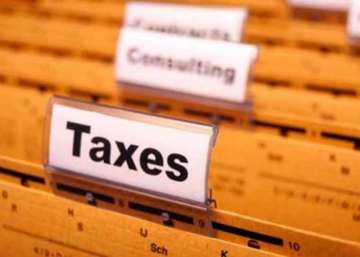5 things you must read before filing ITR for AY 2019-20
The Indian tax authorities recently issued the notification that various income tax return forms for Assessment Year 2019-20 (AY 2019-20) i.e. Financial Year 2018-19 (FY 2018-19) are now available on the income tax e-filing website.

Tax filing season has already begun and the last date for those who are not required to be audited remains July 31, 2019, until any further announcement.
5 things to remember when filing ITR for AY 2019-20 (Financial Year 2018-19)
The Indian tax authorities recently issued the notification that various income tax return forms for Assessment Year 2019-20 (AY 2019-20) i.e. Financial Year 2018-19 (FY 2018-19) are now available on the income tax e-filing website. This means that income tax filing season for AY 2019-20 has now officially begun and as of now, the last date for ITR is the 31st of July 2019. The following are some key things that you need to keep in mind about ITR e-filing for AY 2019-20.
New ITR Form 1 Rules for AY 2019-20
The income tax e-filing website is the single best resource for finding all ITR forms online along with details regarding their applicability. For AY 2019-20, the Central Board of Direct Taxes (CBDT) has notified that ITR Form 1 (SAHAJ) can no longer be filed by company directors as well as those with shareholdings in unlisted companies. This is in addition to the fact that ITR Form 1 is anyways not applicable in case of tax assessees with annual income in excess of Rs. 50 lakh. So do not forget to check which ITR form to use before you file your income tax returns online.
Know amount of tax relief applicable u/s 87A
Interim Budget 2019 has significantly expanded the scope of tax relief u/s 87A but this change is applicable from FY 2019-20 i.e. AY 2020-21 onwards. Thus for those e-filing their tax returns in AY 2019-20, the rebate under Section 87A is still capped at Rs. 3,500 for those with net annual taxable income up to Rs. 3.5 lakh. Thus if your net taxable income for FY 2018-19 exceeds Rs. 3.5 lakh, you do not qualify for the tax rebate u/s 87A. Ensure that you factor this and calculate your tax liability accordingly before beginning your income tax return filing for the current assessment year.
Standard Deduction
Another Interim Budget 2019 announcement that gave salaried and pensioners some cheer was the fact that standard deduction has been increased to Rs. 50,000 annually irrespective of total salary. This change however, is applicable only from AY 2020-21, so do keep in mind that your standard deduction will be Rs. 40,000 for AY 2019-20. Another thing to keep in mind regarding standard deduction is the fact that this benefit only applies to salaried employees and those receiving income from pension thus self-employed individuals/professionals cannot claim the benefit of standard deduction.
Enhanced senior citizen benefits
There is good news for senior citizens (60 years and above) who are e-filing their income tax return this year. For starters, u/s 80 TTB, the TDS threshold for cumulative interest earnings from fixed deposits as well as savings deposits at banks, post office and co-operative banks has been increased to Rs. 50,000 annually. But do keep in mind that you will still need to declare it as interest income and pay tax on it accordingly, if applicable. On the other hand, you do not have to apply for refunds in case the interest earned by you for the fiscal is lower than the threshold amount.
The other tax deduction benefit specifically applicable to senior citizens for AY 2019-20 is the increased deduction u/s 80D for medical insurance premium, diagnostic tests, medical treatments etc. of up to Rs. 50,000 for the current assessment year. This is higher than the earlier Rs. 30,000 annual deduction u/s 80D allowed for AY 2018-19 and is expected to reduce the tax burden on senior citizens in the current fiscal.
Ensure timely filing and avoid penalties
Officially the last date for filing income tax returns on time for AY 2019-20 is the 31st of July 2019. While historically this has been extended by up to a month (deadline was extended to 31st August 2018 for AY 2018-19), filing beyond the deadline features a range of penalties. The first of these is the penal interest rate applicable to delayed income tax payments which may be a result of delayed income tax return filing. The current penal interest rate is 1% of the amount of tax paid late u/s 234B of the Income Tax Act. The good news is that this penal interest is applicable only if one of the following conditions is met:
• Assessed tax liability for the fiscal is more than 90% of total TDS/advance tax paid
• No advance tax was paid even though it was applicable to the income tax assesse.
As of FY 2017-18 (AY 2018-19), a new penalty for later ITR filing has also been introduced through the newly inserted Section 234F. The same late ITR filing fees are also applicable to those submitting delayed returns in AY 2019-20*:
|
ITR Filing Date |
Late Filing Fee (Annual income less than Rs. 5 lakh) | Late Filing Fee (Annual income greater than Rs. 5 lakh) |
| On or before July 31, 2019 | Nil | Nil |
| August 1, 2019 to December 31, 2019 | Rs. 1,000 | Rs. 5,000 |
| Jan 1, 2020 to March 31 | Rs. 1,000 | Rs. 10,000 |
*The above data is based on the 31st July 2019 deadline for timely income tax return filing and this may be extended by the government at a later date leading to changes in the applicable penalty.
So, as long as you file your ITR in a timely manner instead of waiting for the last moment, you can avoid significant penalties that might be applicable.